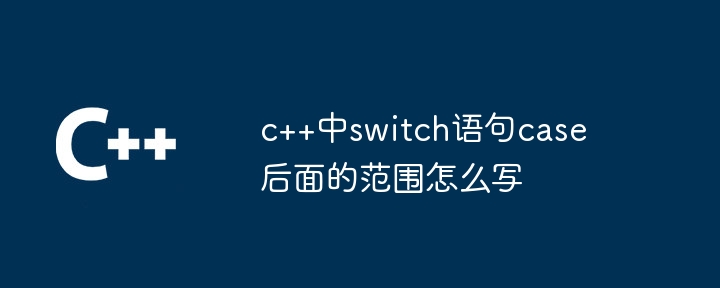
The case range of the switch statement in C is used to specify the value or value range that the variable can match. The syntax structure is: case range: // Code block break; It allows the code block to be executed when the variable matches the range, and uses The break statement exits the switch statement.

The switch statement case range in C
In C, the switch statement can be used to perform different executions based on the value of a variable code block. The scope after case is used to specify a specific value or range of values that the variable can match. To specify a range, you need to use the tilde (~), as shown below:
<code class="cpp">switch (variable) {
case value1 ~ value2:
// 代码块
break;
// ...
}</code>Syntax structure:
<code>case 范围:
// 代码块
break;</code>Explanation:
Example:
<code class="cpp">int number = 5;
switch (number) {
case 1 ~ 5:
cout << "数字介于 1 和 5 之间" << endl;
break;
case 6:
cout << "数字是 6" << endl;
break;
default:
cout << "数字大于 6" << endl;
}</code>Output:
<code>数字介于 1 和 5 之间</code>
In this example, the variable number# The value of ## (5) matches the range 1 ~ 5, so the first code block is executed.
The above is the detailed content of How to write the range after case of switch statement in c++. For more information, please follow other related articles on the PHP Chinese website!
 What are the differences between c++ and c language
What are the differences between c++ and c language
 Recommended learning order for c++ and python
Recommended learning order for c++ and python
 Cost-effectiveness analysis of learning python and c++
Cost-effectiveness analysis of learning python and c++
 Is c language the same as c++?
Is c language the same as c++?
 Which is better to learn first, c language or c++?
Which is better to learn first, c language or c++?
 The difference and connection between c language and c++
The difference and connection between c language and c++
 C++ software Chinese change tutorial
C++ software Chinese change tutorial
 Cost-effectiveness analysis of learning python, java and c++
Cost-effectiveness analysis of learning python, java and c++




